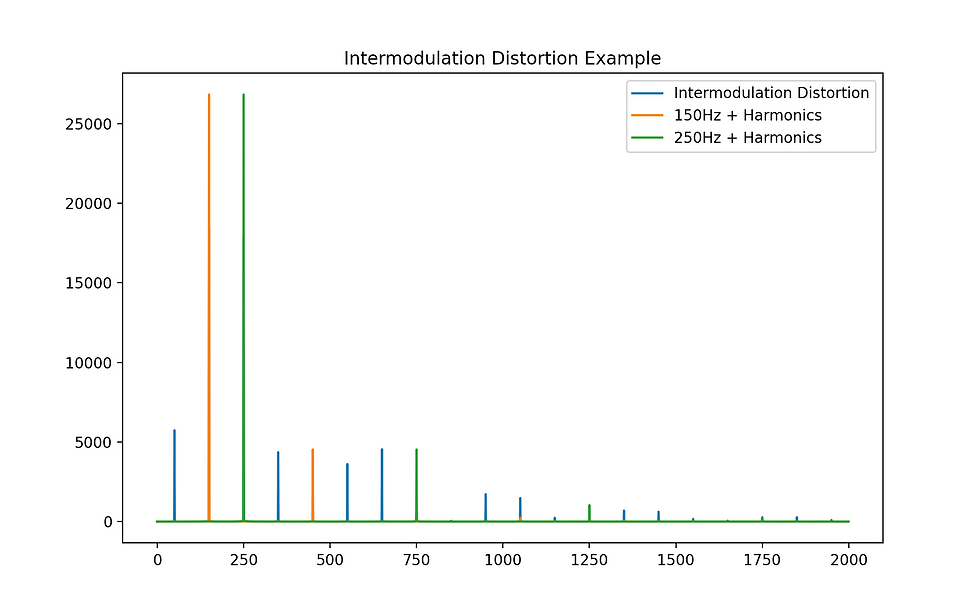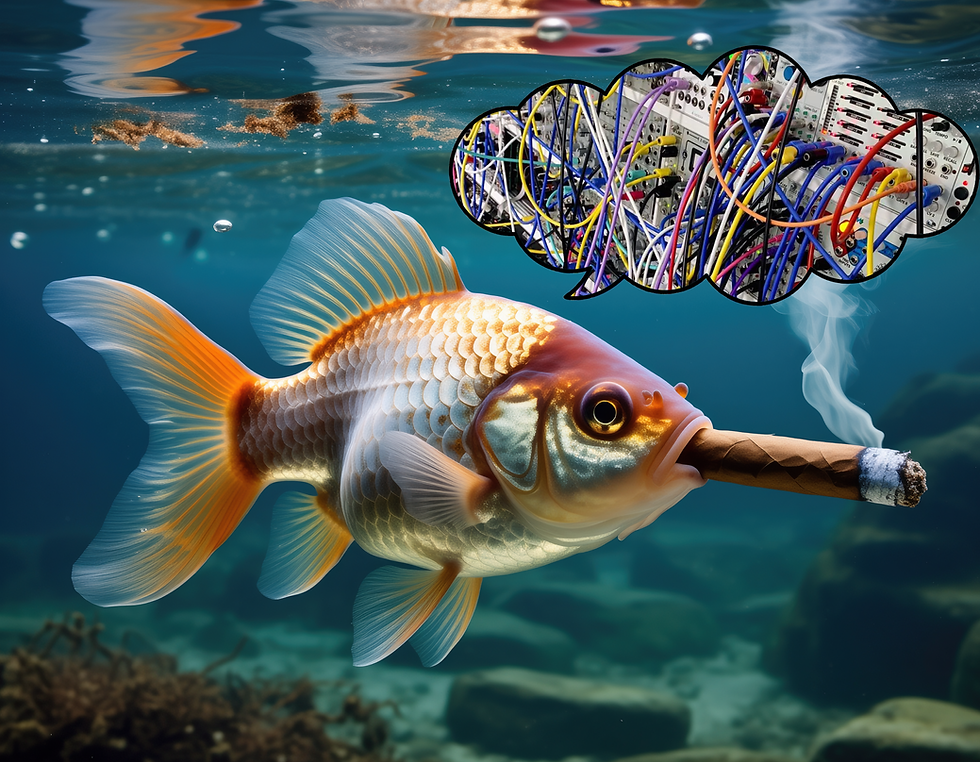Ooey Gooey Gluey Goodness................. (The Shocking Truth Behind Mix Glue)
- newfangledaudio
- Dec 7, 2022
- 5 min read
Our last blog post was all about our new plug-in Invigorate and how it works. This blog post is going to be about why... and the elusive concept of mix glue.
Just the Facts, Ma'am.

Why put a compressor on your master bus? Everyone seems to agree that a bus compressor imparts a mythical quality called mix glue. But what is it?
These are my favorite types of questions to answer, and I’ve spent a lot of time reading, talking, and thinking about mix glue. I usually look for scientific research into the concept I'm studying, specifically experimental results that back up a specific theory (and I like to provide those links in these blog posts). Unfortunately, after a lot of searching I haven’t found any studies or experiments that address mix glue in an analytical way, however, everyone seems to agree that this is a real, and important, phenomenon.
So this blog post will describe my best theory for what “mix glue” is and how it works. But I can’t prove it this time. If you have a different theory, know something I don’t, or have any other thoughts at all, please let me know. I love talking about this stuff.
What is Mix Glue?

If this is the first time you’ve ever head of “mix glue,” or bus processing that makes a mix “gel,” then good news, your mixes are about to get a lot better. Mix glue is the phenomenon where certain processors, mainly compressors (often a certain solid state one from a very logical company) will be placed on the entire mix bus (the master fader) and make the whole song sound like it’s sticking together better. Specifically, it makes your mix sound like a single song, rather than an assortment of parts - a very useful trick..
Auditory Scene Analysis
As you may have noticed, I like to think about how our ears and brains perceive sound. While there isn't specific research on mix glue, there is a commonly used model of sound perception called Auditory Scene Analysis which is mainly concerned with understanding how our brain determines if sounds are “integrated” (heard as a whole) or “segregated” (heard as individual components). This research has been used to inform source separation or speech detection, but I think we can use this same insight to understand how to make our mix glue.

Auditory Scene Analysis tells us that for two sources to appear different there must be a “systematic perceptual difference” between the two sources, which is a fancy way of saying that there must be a difference between the two sources that stays different over time - and that this allows our brain to distinguish these two sounds as coming from two different sources. If you’ll take a small leap with me, I’ll propose that imposing a “systematic perceptual similarity” on a number of sources will help our brain identify these sources as being together. In other words, mix glue!
Moving Together
So what is a “systematic perceptual similarity”? This is a way in which all the sounds in a recording sound or act the same. One way of doing this is making the sounds “move together.” This is something we can do with a bus compressor.
A mix bus compressor is just a compressor you put on the master fader of your mixer. Your mixer simply takes all the sounds, adds gain and panning, and adds them together. That’s not a lot of movement. But a bus compressor listens to the mixture of those sounds then modulates the overall level based on the loudness of that mixture.
If we go back to algebra class and instead of applying that gain to the mix bus, distribute that gain modulation to the individual faders on each channel, you’d see that this is making the whole mix move together.

When the loud kick drum hits, sure it pushes down the kick drum fader, but it also pushes down the guitars, and the vocals, and the synths as well. Like a flock of birds the sound all move in response to the same stimuli, and just like a flock of birds they start to seem less like individuals and more like a whole. This sure sounds like a systematic perceptual similarity to me. Mix glue!
Intermodulatiawho?
But it’s not just the kick drum level modulating the level of the vocals, the vocals are modulating the level of the kick drum as well. Everything is modulating itself and each other. It's like they're inter-modulating.
Another interesting thing about the way our brains understand sound is that we perceive slow changes as rhythm, but we perceive fast changes as pitch - even though both are just the air molecules wiggling back and forth at different rates. Don’t believe me? Check this out
So what do we get when we speed up this idea that everything is modulating itself and each other at once? An audio phenomenon called intermodulation distortion.
Intermodulation distortion says that when you run two separate sources through a nonlinearity (like a compressor, or even an overdrive) that you won’t just create harmonic overtones of the individual frequency components, but that you’ll also create overtones of the sums and differences of these frequencies. These intermodulation components are generated by the same process that has our mix moving together, but sped up super fast. These intermodulation tones are real frequencies which now exist in the audio and which wouldn’t exist if we placed that same compressor or overdrive on each individual channel and mixed them together.

The intermodulation components represent the new connections between those individual sounds which were generated by running them through the compressor together. I like to think that these quiet little sine waves poking up between the music are the real mix glue. A real result of a natural phenomenon that tells our brains these sounds belong together.
Bringing it Home
So how did we use this knowledge when creating Invigorate?
We wanted Invigorate to be a processor that did all the things a good bus compressor does well (add energy and mix glue) even better, and without the negative side effects.
We knew we’d need a compressor engine that was capable of creating both the rhythmic movement of a compressor as well as the faster intermodulation components. While it’s possible to do this with a traditional compressor topology, that seemed like a compromise. The morphing topology we designed is a much more direct way of dialing in the amount of effect and allows you to balance the rhythmic movement and the intermodulation components independently - both give you glue, but you have more control over the character of that glue.

Additionally, we needed a compression curve that gave a lot of movement, and an overdrive curve that sounded pleasant, and not too harsh. The big insight, however, was realizing that because the rhythmic movement and the intermodulation were the same process it was important to achieve these through the same curve. We spent a lot of time designing a curve that could do both well.

Finally, we stole your ratio and threshold knob. Ratio and threshold are all about controlling the dynamic range of your audio. The idea of glue compression is to add some of this rhythmic movement and intermodulation, right? In a traditional bus compressor you’d control the amount you add by using the ratio control (a little goes a long way) and then trying to match the level with the threshold and makeup gain. We decided it was a lot easier to balance the amount of glue you’re adding with a mix control (a little still goes a long way), then you can use the radar display to dial in the character you’re looking for without worrying about amount being added or the overall level (thanks to the automatic gain compensation).

So that's why we designed Invigorate. Hope it helps you get all your mixes sounding super exciting and super gluey.
If you haven't already, go get the demo here and check it out on your own mixes: https://www.newfangledaudio.com/invigorate
Also, it’s currently on sale: https://www.newfangledaudio.com/invigorate
And if you enjoyed this, you’ll probably enjoy the rest of our blog where we talk about our other products: https://www.newfangledaudio.com/blog









TSO777
SLOT GACOR
SLOT TOTO
SLOT QRIS
TOTO TOGEL
SLOT777
SLOT MAXWIN
SITUS SLOT
SITUS TOTO
SITUS GACOR
SITUS TOTO TOGEL
SITUS SLOT QRIS
SITUS SLOT ONLINE
TSO777 LOGIN
TS77CASINO
TS77CASINO DAFTAR
TSO777SPORTS
TSO777SPORTS LOGIN
GACOR777
LINK ALTERNATIF SLOT GACOR
SLOT88
LINK ALTERNATIF SITUS TOTO GACOR
RTP LIVE SLOT
LOGIN TSO777
DAFTAR TSO777
AGEN TSO777
SITUS TSO777
LINK ALTERNATIF TSO777
LINK TSO777
SLOT TSO777
TSO777 LOGIN
TSO777 DAFTAR
TSO777 AGEN
TSO777 SLOT
TSO777 LINK ALTERNATIF
RTP SLOT HARI INI
tso777 slot login
tso777 agen slot gacor
tso777 alternatif login
rtp tso777
tso777 agen slot
rtp tso777 hari ini
tso777 slot rtp
tso777 rtp
tso777 slot login link alternatif
enlightening article!
To my ears, intermodular distortion is an undesirable byproduct of compression. So the more you compress, the tighter your dynamics, but at the same time the more you are drowned into that particular distortion, hastening your mix. And this is an unsolvable conundrum for now, which kind of links together glue with dirtiness... One day, someone will abandon the current flight forward, money driven attitude in audio design, consisting of adding more "vibes" instead of cleaning the sound to let the music exist, and design a compressor that will somewhat anticipate its own intermodular distortion and find a way to eliminate it. I maybe dreaming...but in the meantime, creating the "glue" in a mix is a complex process, very context…
❣️Big Love ,, We Are Blessed ❣️
Thank You For These ToolToys 🤓
This is why I love this company. Not only the plugins are top notch, but the amount of useful information you share is amazing.